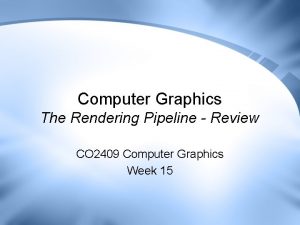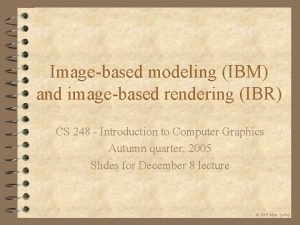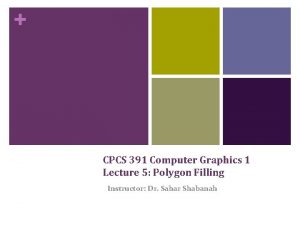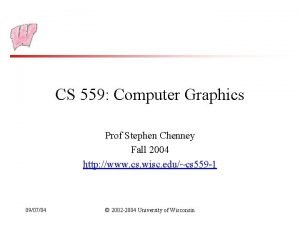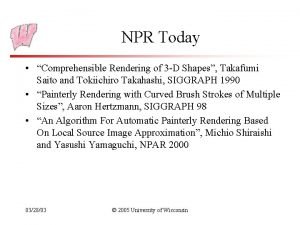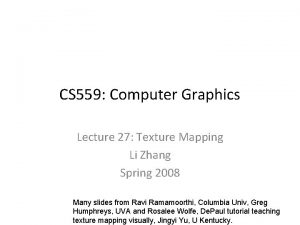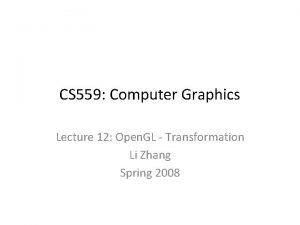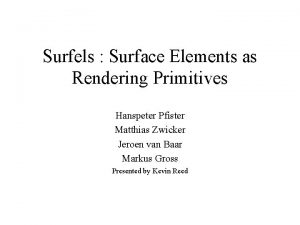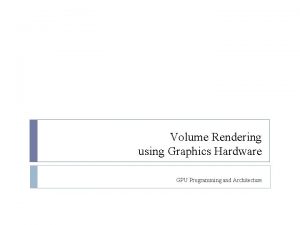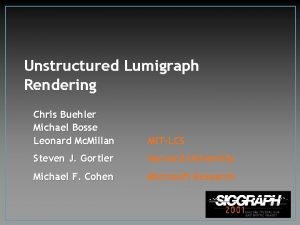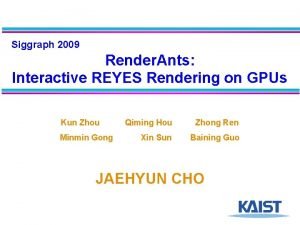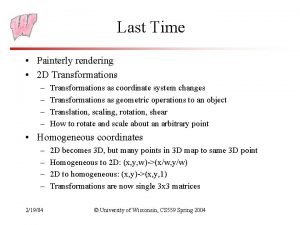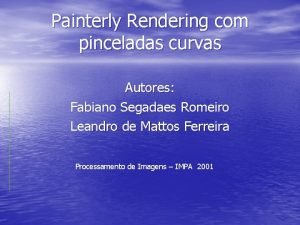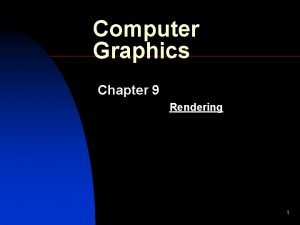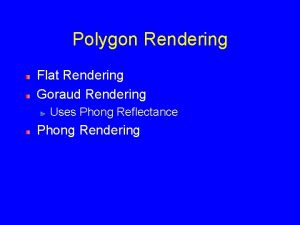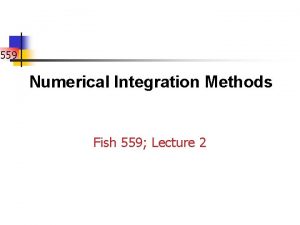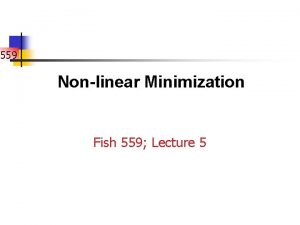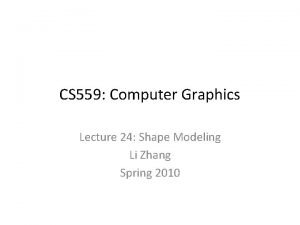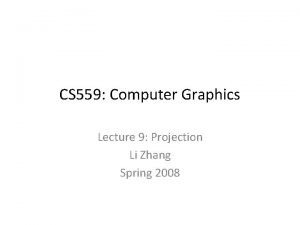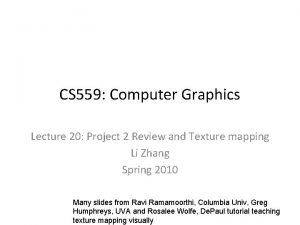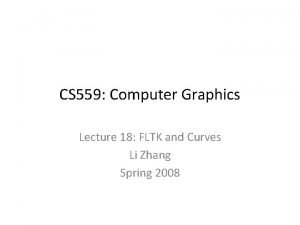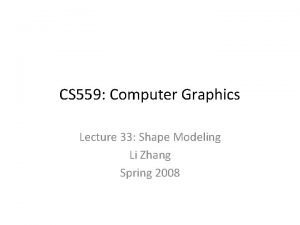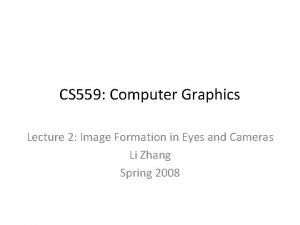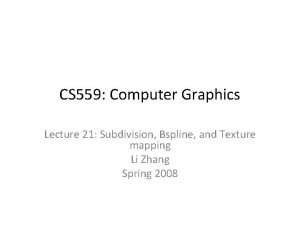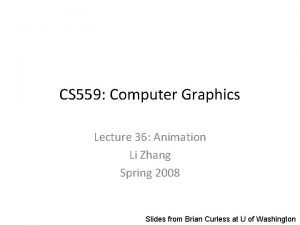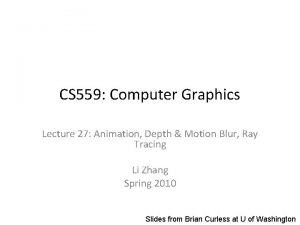CS 559 Computer Graphics Lecture 6 Painterly Rendering








![Gradients • The gradient is the 2 D equivalent of the derivative: gx[i, j] Gradients • The gradient is the 2 D equivalent of the derivative: gx[i, j]](https://slidetodoc.com/presentation_image_h2/4c245238e4fce78bc56ff06ef6cc3514/image-9.jpg)












- Slides: 21

CS 559: Computer Graphics Lecture 6: Painterly Rendering and Edges Li Zhang Spring 2010

Another type of painterly rendering • Line Drawing http: //www. cs. rutgers. edu/~decarlo/abstract. html

Another type of painterly rendering • Line Drawing http: //www. cs. rutgers. edu/~decarlo/abstract. html

Another type of painterly rendering • Line Drawing http: //www. cs. rutgers. edu/~decarlo/abstract. html

Another type of painterly rendering • Line Drawing http: //www. cs. rutgers. edu/~decarlo/abstract. html

Edge Detection • Convert a 2 D image into a set of curves – Extracts salient features of the scene

Edge detection • One of the most important uses of image processing is edge detection: – Really easy for humans – Not that easy for computers – Fundamental in computer vision – Important in many graphics applications

What is an edge? • Q: How might you detect an edge in 1 D?
![Gradients The gradient is the 2 D equivalent of the derivative gxi j Gradients • The gradient is the 2 D equivalent of the derivative: gx[i, j]](https://slidetodoc.com/presentation_image_h2/4c245238e4fce78bc56ff06ef6cc3514/image-9.jpg)
Gradients • The gradient is the 2 D equivalent of the derivative: gx[i, j] = f[i+1, j] – f[i, j] and gy[i, j]=f[i, j+1]-f[i, j] Can write as mask [-1 1] and [1 – 1]’ • Properties of the gradient – It’s a vector – Points in the direction of maximum increase of f – Magnitude is rate of increase • How can we approximate the gradient in a discrete image?

Less than ideal edges

Results of Sobel edge detection

Edge enhancement • A popular gradient magnitude computation is the Sobel operator: • We can then compute the magnitude of the vector (sx, sy).

Results of Sobel edge detection

Results of Sobel edge detection

Non-maximum Suppression • Check if pixel is local maximum along gradient direction – requires checking interpolated pixels p and r The Canny Edge Detector

Steps in edge detection • Edge detection algorithms typically proceed in three or four steps: – Filtering: cut down on noise – Enhancement: amplify the difference between edges and non-edges – Detection: use a threshold operation – Localization (optional): estimate geometry of edges, which generally pass between pixels

The Canny Edge Detector original image (Lena)

The Canny Edge Detector magnitude of the gradient

The Canny Edge Detector After non-maximum suppression

Canny Edge Detector original Canny with : Gaussian filter parameter • The choice of – large – small depends on desired behavior detects large scale edges detects fine features Canny with

 Computer graphics pipeline
Computer graphics pipeline Post processing
Post processing Graphics rendering
Graphics rendering Graphic monitor and workstation in computer graphics
Graphic monitor and workstation in computer graphics Computer graphics chapter 1 ppt
Computer graphics chapter 1 ppt Ee 559
Ee 559 Cs 559
Cs 559 Cs 559 uw madison
Cs 559 uw madison 559 redbook
559 redbook Cs 559
Cs 559 01:640:244 lecture notes - lecture 15: plat, idah, farad
01:640:244 lecture notes - lecture 15: plat, idah, farad Computer security 161 cryptocurrency lecture
Computer security 161 cryptocurrency lecture Computer aided drug design lecture notes
Computer aided drug design lecture notes Architecture lecture notes
Architecture lecture notes Isa computer architecture
Isa computer architecture Arsiran bayangan
Arsiran bayangan Surfels: surface elements as rendering primitives
Surfels: surface elements as rendering primitives Rendering pipeline
Rendering pipeline High dynamic range rendering
High dynamic range rendering Jerry tessendorf
Jerry tessendorf Michael buehler
Michael buehler Reyes rendering
Reyes rendering
